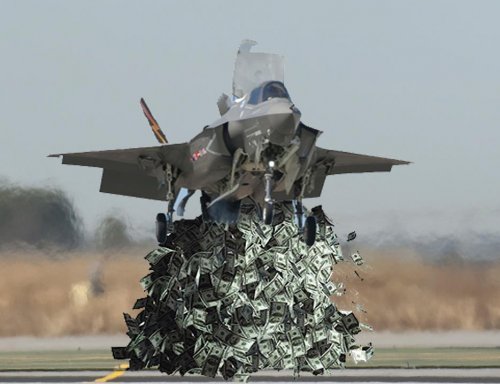The U.S. Defense Department’s newest and most advanced fighter jet has cracked during testing and isn’t yet reliable for combat operations, the Pentagon’s top weapons tester said in new report.
The entire F-35 fleet was grounded last February after a crack was discovered in a turbine blade of an F-35A. While the order was subsequently lifted, more cracks have been discovered in other areas and variants of the Lockheed Martin Corp.-made plane, according to the latest annual report by J. Michael Gilmore, director of Operational Test and Evaluation.
Durability testing of the F-35A, the Air Force’s version of the plane designed to take off and land on conventional runways, and the F-35B, the Marine Corps’ model that can take off like a plane and land like a helicopter, revealed “significant findings” of cracking in engine mounts, fuselage stiffeners, and bulkhead and wing flanges, according to the document. A bulkhead actually severed at one point, it states.
“All of these discoveries will require mitigation plans and may include redesigning parts and additional weight,” Gilmore wrote in the report.
The F-35C, the Navy’s version of the plane designed to take off and land on aircraft carriers, has also had cracks in the floor of the avionics bay and power distribution center and, like the F-35B, in the so-called jack point stiffener, according to the document.
The hardware problems, along with ongoing delays in software development, among other issues, led Gilmore to conclude that the fifth-generation fighter jet’s “overall suitability performance continues to be immature, and relies heavily on contractor support and workarounds unacceptable for combat operations.”
He added, “Aircraft availability and measures of reliability and maintainability are all below program target values for the current stage of development.”
The Joint Strike Fighter program is the Pentagon’s most expensive acquisition effort, estimated last year to cost $391 billion to develop and build 2,457 F-35 Lightning IIs. The single-engine jet is designed to replace such aircraft as the F-16, A-10, F/A-18 and AV-8B.
The Pentagon this year plans to spend $8.4 billion to buy 29 F-35s, including 19 for the Air Force, six for the Marine Corps, and four for the Navy. The funding includes $6.4 billion in procurement, $1.9 billion in research and development, and $187 million in spare parts. The department in fiscal 2015 wants to purchase 42 of the planes.
The Marine Corps had expected to begin operational flights of the aircraft in 2015, followed by the Air Force in 2016 and the Navy in 2019.
The Corps’ schedule depends on using a more limited version of the software, known as Block 2B, designed for use with such precision-guided weapons as the AIM-120C Advanced Medium-Range Air-to-Air Missile, GBU-32/31 Joint Direct Attack Munition and GBU-12 Paveway II bomb.
The first operational flights, however, will probably be delayed because the aircraft’s software won’t be ready in time due to ongoing glitches, according to the report.
“Initial results with the new increment of Block 2B software indicate deficiencies still exist in fusion, radar, electronic warfare, navigation, EOTS [Electro-Optical Targeting System], Distributed Aperture System (DAS), Helmet-Mounted Display System (HMDS), and datalink,” it states. “These deficiencies block the ability of the test team to complete baseline Block 2B test points, including weapons integration.”
Lockheed has reassigned more engineers to improve the software, and the Pentagon has assembled an outside team of experts to study the issue.
Even so, the report touches on other problem areas.
The aircraft remains vulnerable to “ballistically-induced propellant fire from all combat threats,” such as missile strikes, according to the document; its computer-based logistics system, the Autonomic Logistics Information System, or ALIS, was fielded with “significant deficiencies;” and the program has a “significant risk” of failing to mature modeling and simulation technology, known as the Verification System, or VSim, according to the document.


